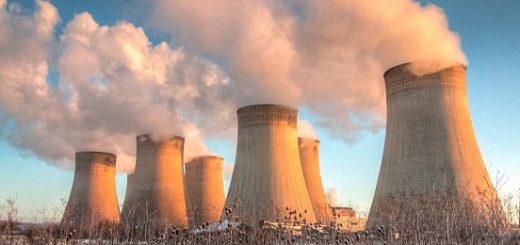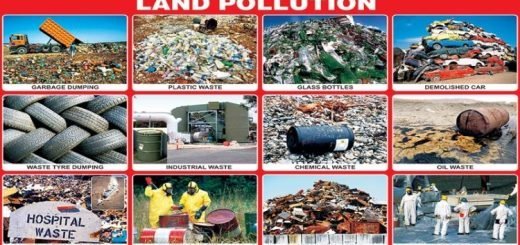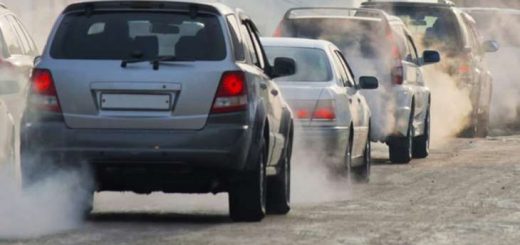Air pollution causes, types, effects, solutions and How to prevent air pollution
Air pollutants have a dangerous effect on human health, they are taken up by the blood & pumped all around the body, Air pollutants consist of gaseous pollutants, odours, dust, fumes, mist, and smoke, Air pollution due to energy generation, transportation and industries have different chemical compositions and health impacts, Fires are another major source of air pollution and can lead to dangerous problems.
Air pollution
Air pollution is dangerous, Its effects can range from higher disease risks to rising temperatures and it may cause deaths, Poor air quality kills people, Air pollution has been linked to higher rates of lung cancer, heart diseases, stroke & respiratory diseases such as asthma, Microscopic pollutants in the air can slip past our body’s defenses, penetrating deep into our respiratory and circulatory system, damaging our lungs, heart & brain.
The main sources of air pollution are power plants, factories, and vehicles, They emit fumes and gaseous waste into the atmosphere, Air pollution can reach harmful concentrations both outside and indoors, It is a mix of particles & gases, Air pollution is linked to climate change, the main driver of climate change is fossil fuel combustion which is a major contributor to air pollution.
The Air Quality index is one measure of outdoor air pollution, or AQI which rates air conditions across the country based on concentrations of five major pollutants: ground-level ozone, particle pollution (or particulate matter), carbon monoxide, sulfur dioxide, and nitrogen dioxide, Some of those also contribute to indoor air pollution, along with radon, cigarette smoke, volatile organic compounds (VOCs), formaldehyde, asbestos, and other substances.
Many people live in places with high levels of air pollutants, They have a 20% higher risk of death from lung cancer than people who live in less polluted areas, Outdoor air pollution can kill more than 3,5 million people annually worldwide, about 50% of that is attributable to road transportation.
Many people can die from chronic obstructive respiratory disease (COPD) which develops due to exposure to such indoor air pollution a year, you can breathe 20,000 liters of air each day, so, the more polluted the air is, the more we breathe dangerous chemicals into our lungs.
The air you breathe affects every part of your body, breathing toxic air can cause shortness of breath and irritation in your nose and throat, People who suffer from allergies and asthma are affected by these problems, Pollution can aggravate existing health problems for chronically ill and elderly individuals, Some toxic chemicals can be more severe, Long-term exposure can cause cancer, birth defects, nerve damage, and more.
Solutions of Air Pollution
Some national or international policies can be used to control air pollution, International organizations such as the European Union (EU), United Nations (UN), and environmental programs have devised clean air directives to reduce air pollution, Examples include the Environmental Protection Agency (EPA), Many governing policies can be undertaken to reduce emissions, installation of pollution control devices can be used to reduce the adverse effects of air pollution.
You can introduce post-combustion controls to control air pollution, You can introduce the newest end-of-pipe measures to reduce the emission of sulphur dioxide, nitrogen oxides & particulate matters at power stations, in large-scale industry, You can introduce advanced emissions standards in industries such as iron and steel plants, cement factories, glass production, chemical industry, etc.
Emission standards for road vehicles must be improved, You can strengthen all emissions standards, special focus on the regulation of light and heavy-duty diesel vehicles, You should enforce mandatory checks and repairs for vehicles, you have to suppress construction & road dust, Vehicles with gasoline-powered engines are fitted with catalytic converters on the exhaust pipe to reduce the exhaust gas emissions.
You have to increase green areas, You should manage agricultural residues, including strict enforcement of bans on open burning of household waste, you have to prevent forest and peatland fires, You can introduce covered storage and efficient application of manures; encourage anaerobic digestion, You should improve the use of Nitrogen fertilizers, you should establish efficient application, for urea also use urease inhibitors and/or substitute with ammonium nitrate.
You should improve efficiency & introduce emissions standards for Brick kilns (stone ovens), You require low-sulphur fuels and stricter control of particulate emissions related to shipping, you can introduce low-solvent paints for industrial and do-it-yourself applications, leak detection, incineration & recovery.
You should use clean fuels – electricity, natural gas, liquefied petroleum gas (LPG) in cities, and LPG and advanced biomass cooking and heating stoves in rural areas, and substitute of coal by briquettes, You should switch to renewables for power generation, you can use incentives to foster extended use of wind, solar and hydropower for electricity generation and phase out the least efficient plants.
You should use incentives to improve the energy efficiency of household appliances, buildings, lighting, heating and cooling, and encourage rooftop solar installations, You have to enforce energy efficiency standards for industries, you can introduce ambitious energy efficiency standards for the industry.
You have to promote electric vehicles, you have to encourage a shift from private passenger vehicles to public transport, You have to encourage centralized waste collection with source separation and treatment, including gas utilization, You have to replace refrigerant fluids, You can ensure full compliance with the Kigali Amendment, aimed at the complete phase-out of Hydrofluorocarbon (HFCs).
You have to introduce a well-managed two-stage treatment with biogas recovery, You can encourage the pre-mining recovery of coal mine gas, You should improve existing oil and gas production, encourage the recovery of associated petroleum gas, stop routine flaring & improve leakage control.
Flue-gas desulfurization (FGD), commonly referred to as scrubbing, is as well another means of providing a technical solution to Sulfur Oxide emissions, Scrubbing is a process that chemically eliminates the sulfur oxide gasses leaving the smokestacks, Power plans can be retrofitted with carbon-capturing technologies that trap emitted carbon dioxide.
You should use renewable or green energy sources, Fossil fuel & coal are the main contributors to air pollution, so, opting for alternative or renewable energy sources to produce power presents a practical solution to air pollution, Alternative energy sources such as wind energy, geothermal energy, solar energy, and hydro-power, If people can harness a variety of these energy sources instead of relying on fossil fuels or coal energy, air pollution can reduce more than threefold.
Natural gas, fuel cells & batteries can substitute the use of fossil fuels, You should quit coal, establish clear, strict air quality standards and ensure that cities that fail to meet national air quality targets provide plans stating when and how they will do so, you have to quit coal and move away from fossil fuels, replacing them with clean, renewable energy.
Saving energy cuts down air pollution, Another measure is re-using some of the utilities we depend on such as plastic bags, papers, or bottles because their production creates loads of pollution, We should reduce operational carbon emissions by targeting net-zero carbon building performance, requiring optimal energy efficiency for building fabric and systems as well as sourcing of energy from renewables.
Air quality index uses, importance (air monitoring data) and ways to estimate air pollutant levels



